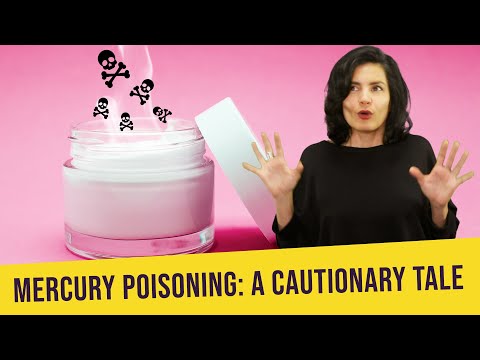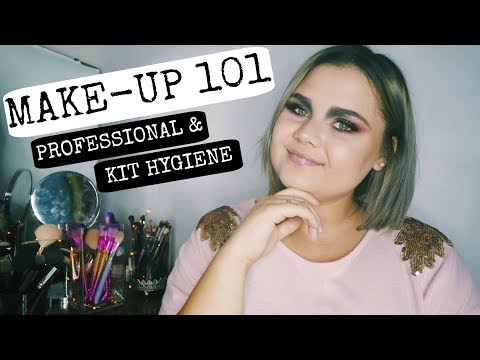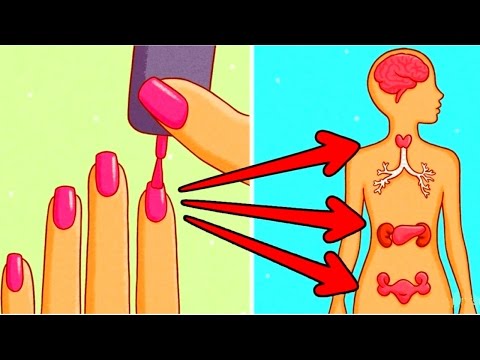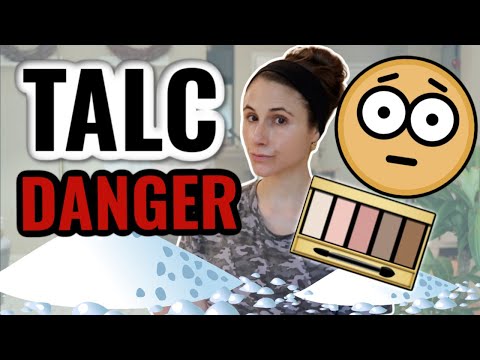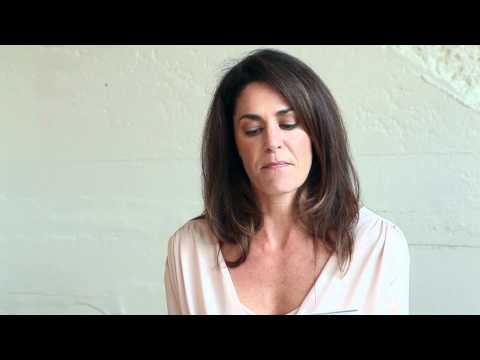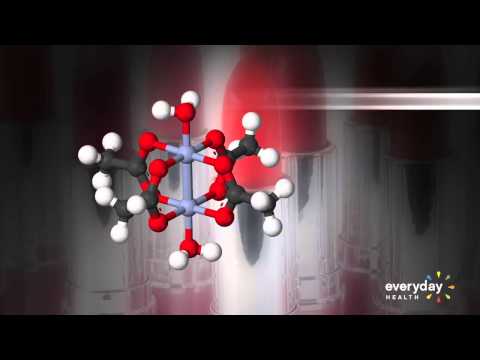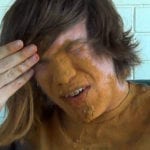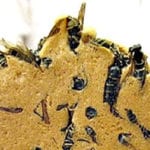Even with these unregulated labels, we tend to ignore the ingredients or harmfulness of some of our favorite and most used beauty products—to our own detriment. So let’s look at 10 of the most dangerous beauty products we still use every day.
10 Skin Creams That Contain Mercury
Mercury is a normal occurring metal in nature. However, whenever delivered into the environment, it tends to be harmful. In California, over the past ten years, there have been more than 60 poisonings connected to unknown, unlabeled, or homemade skin creams that contained the harmful mercury, usually listed as mercurous chloride, calomel, or others. You should keep away from handcrafted or unlabeled creams and other brand-name containers that are not sealed when purchased. Unsealed containers might have been altered and may contain mercury or other contaminants. Individuals utilize these kinds of creams for blemishes, freckles, flaws, age spots, and treating skin inflammation and acne. These creams are typically sold in local shops, at flea markets, by individuals, or on the web. When there is no list of ingredients on the product, simply don’t use it. Watch this video on YouTube Many of these products are made outside of the U.S. and are imported. In prior poisonings connected with imported skin cream, a few kids and infants—who obviously weren’t the intended user—became extremely ill from contact with the mercury tainting their homes or through contact with relatives who used the items. Kids and pregnant women are particularly sensitive to the harmful impacts of mercury. Symptoms of mercury poisoning include tremors, memory issues, numbness and tingling, and changes in vision or hearing. So be mindful when choosing your favorite beauty product or trying new brands.[1]
9 Mascara
Your mascara wand gets contaminated when you use it! Bacteria grows and thrives in the dark, moist environment of your mascara tube. Even though many cosmetics contain preservatives that slow germ growth, bacteria will build up over time. This can result in certain bacterial diseases like eye cysts or pinkeye. Pay attention to expiration dates! Also, throw away the mascara after four to six months (max) from when you first opened the tube. Do it sooner if you notice clumping or any change in texture, color, or smell. Mascara should be disposed of and replaced, no matter the amount left in the tube or how much you paid for it![2]
8 CC Creams
For those like myself who prefer the no-makeup or low-maintenance look, CC creams—also called color-correcting or complex-care creams—are a natural choice. CC creams generally act as a three-in-one, with sunscreen, moisturizer, and foundation. Other creams may also make formulas that advertise concealers, anti-aging cream, bronzer, highlighter, or oil absorbers—or some combination of these attributes. Used to address any discoloration like redness, dullness, and dark circles, CC creams have lured over many tinted-lotion supporters with their feathery surface and covering capacity. Tragically, that is the place where the greatness of CC creams ends, particularly for certain brands. Some major CC cream brands like Olay Total Effects 7-in-One Pore Minimizing (Fair to Light) are dangerous because of the presence of acrylamide. Acrylamide occurs in certain plant foods like potatoes, some grains, and coffee. It forms when these products are cooked for long periods or at high temperatures. However, it is also added to items like cosmetics and plastics and has been linked to cancer! (Which is the reason it’s not shocking that it additionally crops up in cigarettes smoke!) Other ingredients to watch for in CC creams are oxybenzone and retinyl palmitate (vitamin A). Oxybenzone, found in about 20% of CC creams, is a widely used sunscreen ingredient that can penetrate the skin, cause allergic skin reactions, and may disrupt hormones. Studies have also reported an increased risk of endometriosis and lower birth weight in daughters. While indoor or night-only creams often contain retinyl palmitate or other vitamin A derivatives, using CC creams with prolonged exposure to the sun can result in excess skin growth and spur the development of skin tumors and lesions. It’s best to skip CC creams with these ingredients—do your homework before buying.[3]
7 Nail Polish
If you’ve ever wrinkled your nose when having your nails done (or do them yourself), you know the smell of nail polish and acetone remover is not the most pleasant. Do you think that may be because your polish is trying to tell you something? Nail polishes contain harmful chemicals that can potentially do damage, from simply discoloring nails to causing thin and brittle nails to something a bit more harmful. In Sally Hansen Diamond Strength No Chip Nail Tone, high levels of styrene were found. Essentially used in the production of plastics and rubbers, styrene has been associated with irritation of the skin, eyes, and upper respiratory tract. Long-term exposure to styrene in humans can adversely affect the central nervous system, causing headache, fatigue, weakness, depression, hearing loss, and nerve damage. Many brands market themselves as five-free. This refers to polishes that do not contain five specific ingredients: formaldehyde, toluene, dibutyl phthalate, formaldehyde resin, and camphor. And removers do not fare much better. Nail polish remover generally contains things like isopropyl acetone, which can irritate the eyes and lungs, and ethyl acetate, which acts as a respiratory system and eye irritant. Another possible ingredient, methyl ethyl ketone, may be a neurotoxin. Oh, goody! So, in addition to the polish, the remover can prove harmful, with long-term use even developing into myeloma. I think I’ll stick with natural nails from now on.[4]
6 Perfume
Perfume is something that we’ve been utilizing for centuries, giving little consideration to how unsafe it may be to our health. Many famous people release their own line of perfume or are compensated for using their name, including Halle Berry, Beyoncé, Ariana Grande, and a lot more. These celebrity scents are finding a comeback after an oversaturation—pardon the pun—of the market in the early 2000s. Even with their namesakes’ hands-on involvement and rash of social media followers, are these perfumes really safe? Even the most wonderful eye-catching, stunning perfume bottles are simply…chemicals. Perfume ingredient chemicals are complex combinations of synthetic and/or natural substances which are added to products to give them a distinctive scent. They are loaded with synthetic substances like coumarin, BHT, citral, benzyl salicylate, oxybenzone, and lilial. The last ingredient, lilial, is also known as butylphenyl methylpropional and is linked to cancer. The EU has prohibited its use beginning March 2022. So check out what your favorite scent is made of before shelling out your hard-earned money![5]
5 Setting Powder
Nobody likes to have an oily face. Hey, neither do I. After all that time and work we’ve done to get that flawless look for the day, we need to do something to keep it looking good. Which is the reason setting powders and sprays are so popular. Yet, you might be placing yourself in harm’s way when attempting to conceal your shine. These popular products include ingredients like talc, titanium dioxide, and polytetrafluoroethylene. Talc is a naturally occurring substance, but it shouldn’t be inhaled or swallowed; both can prove harmful and cause eye and lung irritation, chest pain, lethargy, vomiting, diarrhea, and coma. Titanium dioxide is a UV filter that should not be in your pressed or loose powders (in lotions and creams, it’s low risk). And that last ingredient— polytetrafluoroethylene—well, that’s Teflon. Yep, that stuff that keeps your eggs from sticking to the pan! After all that, a little shine doesn’t seem like a terrible thing, right?[6]
4 BB Creams
Another lazy girl cosmetics staple, BB Cream, surprised the world when it came out about a decade ago, flying off the shelves when it hit the western markets. Many beauty brands then jumped on the BB bandwagon, hoping to cash in on the abundance of customers vying for the product. Like CC creams, they are marketed as an “all-in-one” beauty product that acts as a serum, moisturizer, primer, skin repairer, foundation, and sunblock. Sadly, BB creams can be a no-no for individuals who choose options like Aveeno Clear Complexion BB Cream, Maybelline Dream Fresh BB 8-in-1 Skin Perfector, and e.l.f. BB Cream. Besides the scents and oxybenzone (already mentioned in this list), these items all contain methylisothiazolinone, which just means it’s bad for you! Methylisothiazolinone is a widely used chemical that causes hypersensitive responses and irritates the skin, eyes, and lungs. This is another substance that is restricted in Europe from being used in leave-on items —like the BB cream you keep on your skin all day. One more warning for this terrible substance is that, in lab tests, it was deemed a potential neurotoxin. Besides their chemical makeup, these creams really don’t do as they promised as many of them are made with cheap and synthesized ingredients and really not designed to nourish your skin.[7]
3 Lip Gloss
On the off chance that you thought lip shine or lip loss was only a nuisance when getting your hair stuck to it on a blustery day, you haven’t heard anything yet. Sephora’s fave brand, Philosophy, has lip shine products that are drool-worthy in how great they smell, with aromas like Pink Frosted Animal Cracker, Peppermint Stick, and Senorita Margarita. All things considered, it shouldn’t be surprising that these scrumptious flavors have a lot of aroma to them. But they are both drying and irritating. And that’s just the beginning. The Senorita Margarita flavor additionally contains citral. Even though citral is a natural ingredient derived from plant sources, it can still lead to potentially serious allergic reactions. Symptoms of an allergic reaction to citral may include rashes, blisters, itchy skin, and swollen eyes and lips. It’s important to be aware that just because something is natural doesn’t mean it is completely safe or without side effects. Often the opposite is true. In addition, some lip glosses contain lead, cadmium, chromium, aluminum, and five other toxic metals.[8]
2 Blush
Blush should bring life and color back to your face, isn’t that so? So why do so many blushers contain formaldehyde? Found in CoverGirl Cheekers Face Blush and CoverGirl Instant Cheekbones Contouring Blush (in an assortment of tones), it’s really horrible to imagine that such a chemical is being used on the face. Showing up as a few different substances in these items, you will find them under two names: polyoxymethylene urea and quaternium-15. Polyoxymethylene urea is a synthetic polymer used by the cosmetic industry as a bulking agent and to form the outer shell of microcapsules (that hold the color in this case). It is also a formaldehyde releaser that—you got it—releases formaldehyde over time. It’s been connected to organ damage and viewed as an allergen. Quaternium-15 is a formaldehyde-releasing preservative. It’s likely a wise option to leave any products containing these chemicals on the shelf.[9]
1 SPF Foundation
With the information we have now about skin disease and tanning, an ever-increasing number of brands have been adding SPF to the items that are used all over the face. From foundations to BB creams to concealers, added SPF gives us the feeling that we’re shielding ourselves from harmful UV rays Then again, actually, we’re not. To get the SPF advantages of sunscreen in a foundation, we’d need to apply much more than we really do, which is something that major beauty care product companies don’t tell us. For CoverGirl’s Outlive Stay Fabulous 3-in-1 Foundation with SPF in any available shade, the EWG found that the SPF protection was insignificant—and definitely not what was being advertised. For most makeup containing SPF, the actual amount of sunscreen applied to the face is minimal, leaving the skin exposed. So it’s best to use regular sunscreen first, then apply any makeup containing SPF, if you prefer. Oh, but don’t think that your 30 SPF sunscreen and 18 SPF foundation means you have 48 SPF coverage—sunscreen is only as strong as the highest SPF from a single product.[10]
